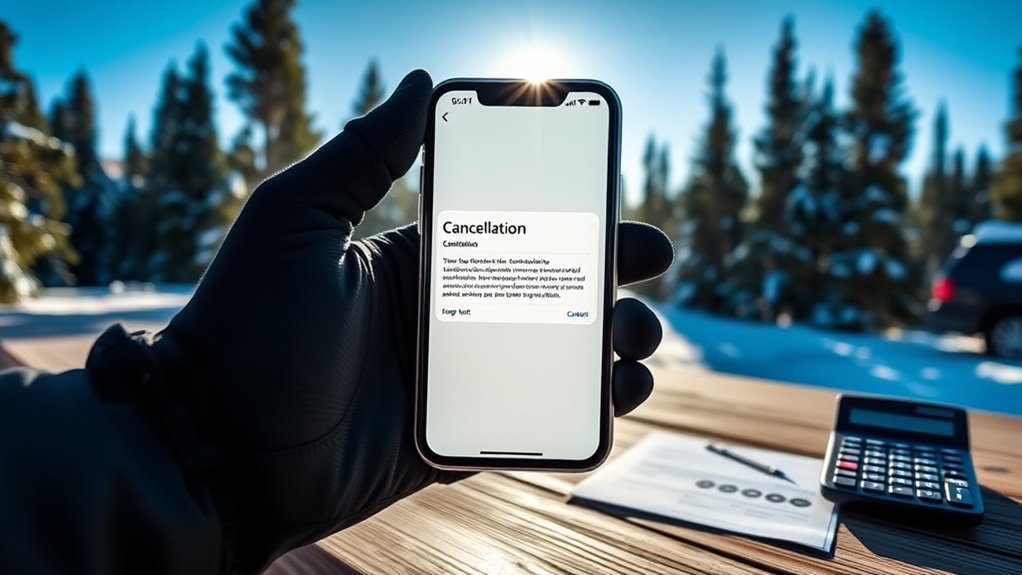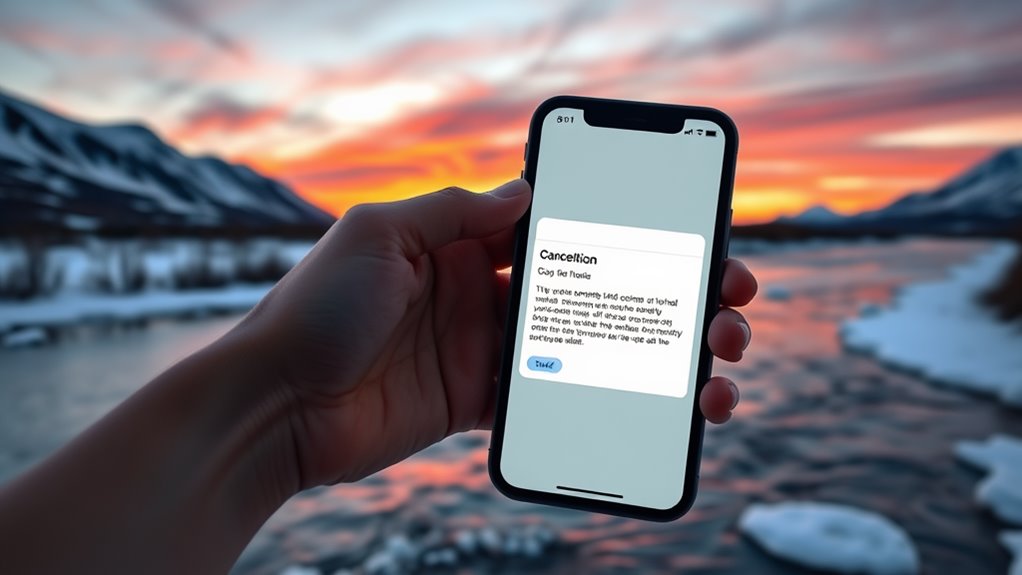If you're considering canceling your SR22 insurance in Alaska, there are several vital steps to take. It's important to understand your current policy and the legal obligations tied to it. You'll need to assess your situation carefully before making any decisions. What are the potential risks of cancellation, and how might they affect you? Let's explore the key tips to guarantee a smooth process.
Key Takeaways
- Consult with your insurance agent to understand the cancellation process and any potential impacts on your premiums.
- Ensure you have met all SR22 requirements and maintained coverage for the full duration before considering cancellation.
- Evaluate financial implications of early cancellation, including potential fines and increased future insurance rates.
- Review alternative insurance options that may be more cost-effective post-SR22 and discuss them with your agent.
- Pay any outstanding fines and fees to avoid penalties during the cancellation process and maintain your driving privileges.
Assess Your Current SR22 Policy

Before you can effectively cancel your SR22 insurance, it's important to assess your current policy.
Start by reviewing the liability coverage limits, which should meet the state's minimum requirements: $50,000 for bodily injury per person, $100,000 for total bodily injury per accident, and $25,000 for property damage. In Alaska, maintaining compliance with SR-22 insurance is crucial to avoid penalties.
Remember, the SR22 isn't an insurance policy; it's a form proving your financial responsibility.
The SR22 serves as proof of financial responsibility, not an actual insurance policy.
Also, note the duration of your SR22 requirement—typically three years for most offenses. Maintaining continuous coverage is essential to avoid resetting the required filing period.
Check if your policy has lapsed, as this could impact your cancellation process.
Finally, consider any additional coverage options you might want or need before proceeding with cancellation to guarantee you have adequate protection moving forward.
Consult With Your Insurance Agent
Consulting with your insurance agent is a vital step when you're looking to cancel your SR22 insurance in Alaska. They can provide valuable insights into the legal requirements specific to your situation, including duration and filing obligations.
Your agent will help you review your current policy to understand any conditions for cancellation and guide you through the necessary steps, such as contacting the DMV.
Additionally, discussing cancellation risks is important; your agent can evaluate how it may impact your insurance premiums and driving privileges.
They can also suggest alternative insurance options that could be more cost-effective once your SR22 requirement ends. By leveraging your agent's expertise, you can facilitate a smoother cancellation process and avoid potential penalties.
Understand Alaska's SR22 Regulations
Understanding Alaska's SR22 regulations is essential for maintaining compliance and protecting your driving privileges. Here are some key points you should know:
- Requirements: SR22 is mandatory for high-risk drivers, including those with DUIs or multiple traffic offenses.
- Coverage: The SR22 certificate confirms you meet minimum liability coverage, which includes $50,000 for one person, $100,000 for multiple individuals, and $25,000 for property damage.
- Filing Period: The SR22 must be maintained for three years after the end of your revocation, but this period can extend for repeat offenses.
- Non-owner Policies: If you don't own a vehicle, you can still obtain a non-owner SR22 policy to fulfill your obligations.
Stay informed to avoid penalties and guarantee your driving privileges remain intact.
Evaluate Financial Implications

When evaluating the financial implications of canceling your SR22 insurance in Alaska, it's essential to reflect on how your decision can impact your overall financial health and driving privileges.
Cancelling early may lead to immediate suspension of your driving privileges and result in state-imposed fines. You'll also face higher future insurance rates due to perceived risk.
While you might hope to reduce costs, remember that maintaining continuous SR22 coverage can stabilize your financial situation in the long run.
Assess your options for affordable coverage, adjust deductibles, and consider potential penalties.
Ultimately, weigh the short-term savings against the risk of long-term financial consequences, ensuring you're making an informed decision that safeguards your future insurability and finances.
Consider Alternative Insurance Options
Exploring alternative insurance options can help you find a more affordable solution while maneuvering the challenges of SR22 requirements in Alaska.
Consider these strategies to lower your premiums:
- Compare Providers: Research various insurance companies like Progressive and State Farm for competitive rates.
- Opt for Non-Owner Policies: If you don't own a vehicle, non-owner SR22 insurance can be a cost-effective solution.
- Take Defensive Driving Courses: Completing these courses may qualify you for discounts, signaling your commitment to safe driving.
- Adjust Your Coverage: Assess your coverage needs and consider increasing deductibles to lower monthly payments.
Prepare for Reinstatement Requirements
To successfully reinstate your driver's license in Alaska after an SR22 requirement, you'll need to prepare by fulfilling several prerequisites.
Start by paying any fines or penalties imposed by the law or DMV. If required, complete community service and participate in any court-ordered programs.
Begin by settling any fines or penalties from the law or DMV, and fulfill any required community service or court programs.
Make sure you've served any mandated jail time and obtain a court clearance receipt if applicable.
Once you've met these conditions, you'll need to pay the reinstatement fee and submit your application at the DMV.
Don't forget to provide proof of your SR22 insurance, dated within the last 30 days.
Depending on your situation, you might also need to pass a written or vision test, and possibly a road test.
Maintain Continuous Coverage Post-Cancellation

Maintaining continuous coverage after canceling your SR-22 insurance is essential to avoid penalties and guarantee you remain legally allowed to drive.
Here are some key steps to facilitate a smooth changeover:
- New policy timing: Start your new insurance policy on or before the SR-22 coverage ends.
- Avoid gaps: Any lapse in coverage can lead to penalties; make sure there's no interruption.
- Premium adjustments: Rates may change based on your driving record, so monitor potential costs.
- Policy comparison: Evaluate different policies to find the best rates and terms for your new coverage.
Working closely with your insurance agent can help facilitate this changeover, making certain you stay compliant with state regulations and maintain your driving privileges.
Conclusion
As you navigate the process of canceling your SR22 insurance in Alaska, remember that every step counts. Just when you think you've got everything sorted, a quick chat with your agent might reveal an unexpected alternative that saves you money. It's all about timing—ensure you maintain coverage to avoid penalties while keeping an eye on your financial implications. With careful planning, you can successfully shift to your next insurance phase without a hitch.


